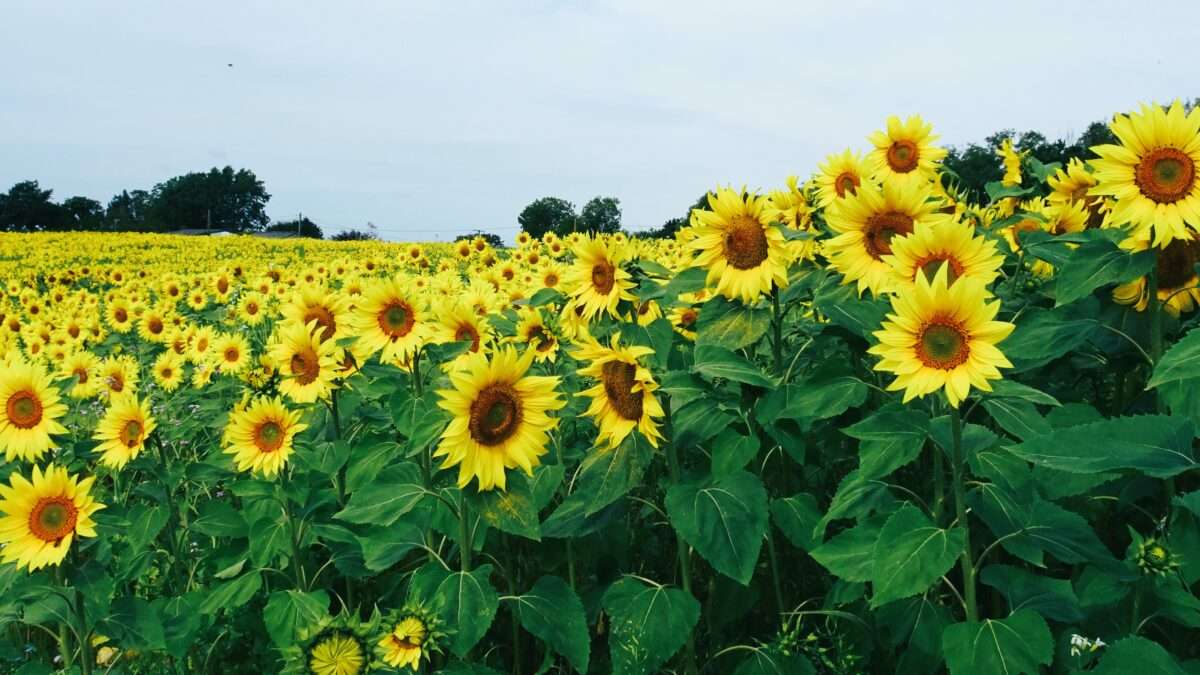During a hectic week, seeing a field of happy sunflowers was a tonic. I drew in a deep breath and then cheered with delight. Hundreds wavered in the breeze and appeared to be smiling as I drove by to the supermarket.
They inspired this blog post. I also returned to take pictures from a lane skirting them, where a terrace of white cottages surveys the glorious golden and umber blossoms. Lucky residents!
It was reminiscent of past holidays in France with similar outlooks.
Around those times I ran a small business, making and selling ceramics. I spent many hours in my studio moulding clay into all sorts, but forming sunflower dishes and plaques was particularly gratifying. They were a best seller too. After the kiln firing, there are a few choices of how to treat the baked clay – bisque. Opaque paints and sealants produce life-like floral decorations. While tableware needs glossy food-safe glazes and a second firing for a glassy effect. The sunflower makes an ideal shape for small plates.
At each step of the design, I was reminded of the Fibonacci sequence named after a Medieval Italian mathematician, who discovered a connection with numbers and patterns to nature and science. Sunflower seeds follow this perfectly. I first came across the maths and data expert’s ideas at an art and numbers workshop, and looking at my sunflower photographs I decided, they are one of my favourite examples showing Fibonacci’s findings.
The plant originates from America, but its botanical title, Helianthus, is Greek. The first part comes from the god of the sun, Helios, and the second half is anthos, meaning flower. It is called this because the blooms always face and follow the sun.
Initially, it was grown for the seeds’ oil’s usefulness, in food, cosmetics and paints.
I love them in bouquets and vases, but nothing beats seeing them growing outside in abundance or in neat rows within gardens.
Until next time,
Sue. X

